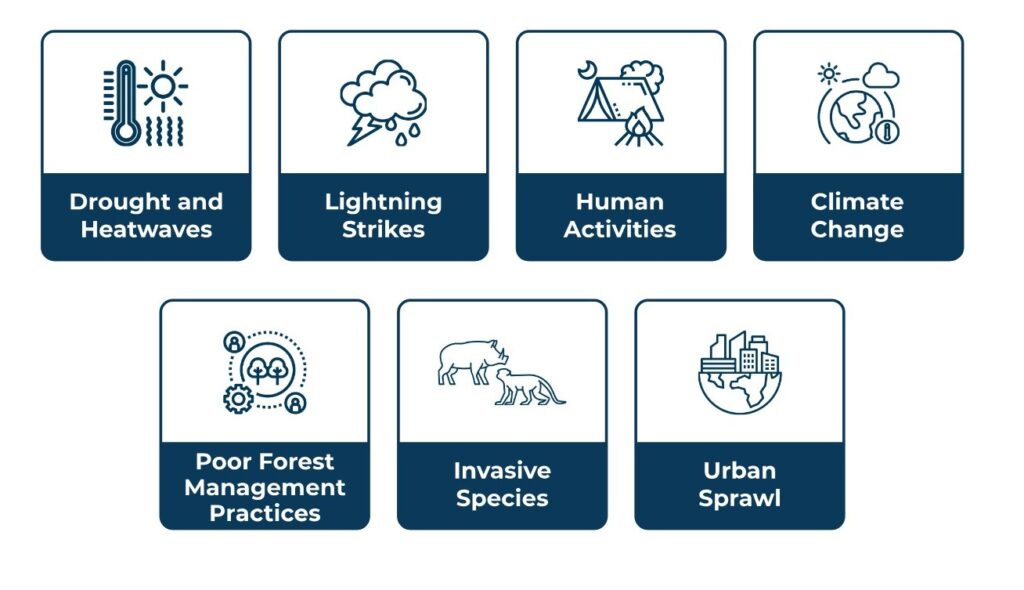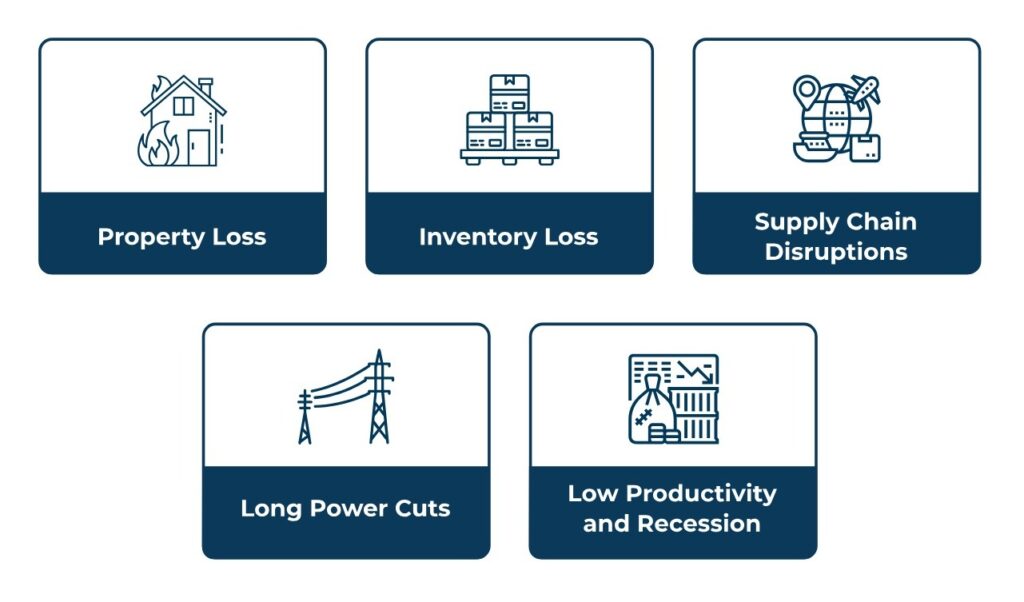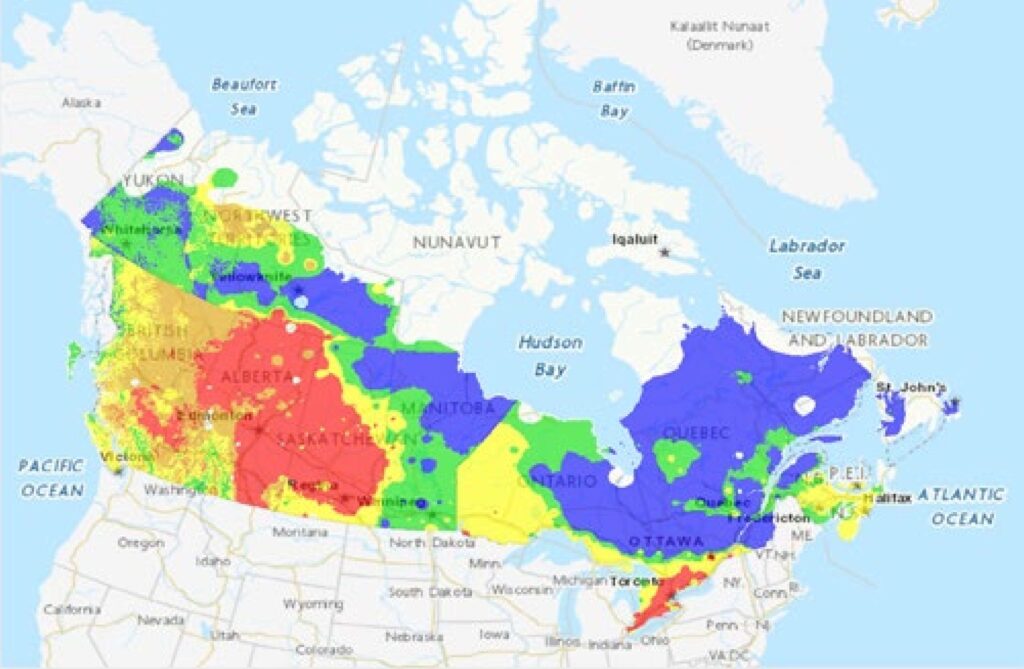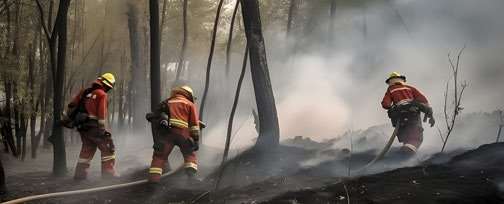Canada is currently experiencing some of the worst wildfires in its history, with several provinces facing significant challenges in containing the fires. The fires have been fueled by a record-breaking heat wave, which has brought temperatures well above average and created a dry and volatile environment. Alberta, in particular, has been affected with wildfires spreading across more than one million acres of land and prompting several evacuation orders. The fires have also caused significant air pollution, with smoke spreading across multiple provinces and affecting air quality. Despite the efforts of firefighters and emergency services, the situation remains precarious. The ongoing wildfires in Canada pose not only immediate threats to human safety and wildlife but also potential long-term effects on the environment, infrastructure, and regional economies. According to recent statistics, over 3,000 structures have been destroyed, with economic losses estimated to be over USD 780 million. The wildfires have burned over 1.2 million hectares of land, producing millions of tones of carbon dioxide emissions, which is contributing to climate change. In addition, the fires have disrupted transportation and energy infrastructure, leading to power outages and road closures.
Causes of wildfires

Possible impact on businesses

Current Situation in Canada
Emergency crews are working to contain multiple wildfires burning across Alberta as of 15 May. Authorities declared a province-wide state of emergency on 06 May due to dozens of fires reported across Alberta amid hot and dry weather. As of 15 May, 88 active fires are burning across the province, 27 of which are out of control. Around 700 firefighters are battling the fires across Alberta, and around 1,000 reinforcements are expected to arrive from other provinces in the coming days.
Around 30,000 people have been displaced by the fires, and many roads within the vicinity of the wildfire complexes have been closed, including sections of several highways. The worst-hit areas include Drayton Valley, about 140 km (87 miles) west of Edmonton, and Fox Lake, around 550 km (342 miles) north of the city, where 20 homes and a police station were consumed by fire. Environment Canada has issued air quality statements across much of northern and central Alberta due to poor air quality and reduced visibility caused by the smoke from the fires. Oil producers in parts of the province have cut production levels due to the fires.

Current Situation in Canada
- The Canadian government has implemented several relief measures to address the impact of wildfires and improve emergency management across the country.
- The government has provided financial assistance, emergency management support, and resource deployment to help combat the ongoing wildfires in Alberta.
- Additionally, the Canadian Red Cross received matching donations from both the Government of Canada and the government of Alberta to support evacuation efforts, provide shelter and food to affected individuals, and assist impacted communities.
- The government has also released the first national-level disaster risk assessment to improve emergency preparedness and management capabilities.
- Moreover, the government funded search and rescue revitalization in Alberta and provided disaster recovery funding for rainfall and flooding in Alberta and Saskatchewan that had impacted the provinces in May 2023.
- Overall, the Canadian government has taken a proactive approach to address the impact of wildfires and improve emergency management and preparedness capabilities across the country.

Things to do Before Wildfires
Workplace recommendations:
- Create a wildfire emergency plan: Develop a plan that outlines the actions that will be taken in the event of a wildfire. The plan should include evacuation procedures, communication protocols, and a list of essential items that need to be protected.
- Conduct regular fire drills: Regular fire drills will help ensure that employees are familiar with the emergency plan and know what to do in the event of a wildfire. Conducting drills will also help identify areas that need improvement and provide an opportunity to test communication systems.
- Maintain the landscape: Remove dead vegetation, dry leaves, and other flammable debris from the property. Ensure that fire-resistant plants are used in landscaping and that they are watered regularly. Maintain a clear space between buildings and vegetation to reduce the risk of fire spreading.
- Create defensible space: Establish a buffer zone around the property by removing flammable materials such as woodpiles, propane tanks, and fuel cans. Create a firebreak by clearing vegetation and creating a space that can be easily defended against an approaching wildfire.
- Install fire-resistant roofing and siding: Consider installing fire-resistant roofing and siding materials to reduce the risk of damage to the property.
- Ensure that fire extinguishers are available: Place fire extinguishers in easily accessible locations throughout the property. Ensure that employees know how to use them and conduct regular inspection to ensure they are in good working condition.
- Develop a communication plan: Establish a communication plan to keep employees, customers, and suppliers informed in the event of a wildfire. Consider using multiple communication channels, including email, social media, and text messages.
- Stay informed: Monitor weather conditions and wildfire alerts regularly. Consider subscribing to a notification service that provides updates on wildfires in the area.

Things to do During Wildfires
Workplace recommendations:
- Evacuate immediately: The safety of employees and customers is top priority during a wildfire. If authorities issue an evacuation order, follow it immediately. If there is no official order, use your best judgment and evacuate the premises if you feel unsafe.
- Activate emergency plan: If evacuation is not necessary, activate the emergency plan and put it into action. Ensure that everyone knows their roles and responsibilities and is ready to act quickly if needed.
- Stay informed: Monitor local news and weather reports for updates on the wildfire. Pay attention to evacuation orders and updates from local authorities.
- Protect critical infrastructure: If possible, protect critical infrastructure, such as servers and data centers, by moving them to a safe location or covering them with fire-resistant materials.
- Secure the premises: Secure the premises by closing all windows and doors and sealing any gaps with tape or damp towels. Turn off all gas and electrical appliances, and unplug all non-critical equipment.
- Keep emergency supplies on hand: Have emergency supplies on hand, including food, water, first aid kits, and flashlights. Ensure that everyone knows where the supplies are located and how to use them.
- Assist emergency services: If requested, assist emergency services by providing information about the property and any hazards that may be present.
- Communicate with employees and customers: Keep employees and customers informed about the situation and provide updates as needed. Consider using social media, email, or text messages to communicate with them.

Things to do After Wildfires
Workplace recommendations:
- Conduct an assessment: Conduct a thorough assessment of the property to determine the extent of the damage. Identify any hazards that may be present and prioritize clean-up efforts accordingly.
- Contact insurance providers: Contact your insurance provider to file a claim and begin the process of assessing damages and arranging for repairs.
- Secure the premises: Secure the premises to prevent further damage or unauthorized access. Consider hiring security personnel or installing temporary fencing as needed.
- Address immediate hazards: Address any immediate hazards, such as unstable structures or hazardous materials, as a priority. This may require the assistance of specialized professionals.
- Begin clean-up efforts: Begin the process of cleaning up the property, removing debris, and repairing damage. Consider hiring professional contractors to assist with the clean-up efforts.
- Assist employees: Assist employees who may have been affected by the wildfire, such as by providing counselling services or arranging for temporary housing.
- Communicate with customers: Communicate with customers to update them on the status of the business and any changes to operations or services.
- Review and update emergency plan: Review and update the emergency plan based on lessons learned from the wildfire. This may include revising evacuation procedures, updating contact lists, or improving communication systems.

Resources:
- Emergency Management British Columbia: 1-800-663-3456
- Website: https://www2.gov.bc.ca/gov/content/safety/emergency-prepared ness-response-recovery
- Alberta Emergency Management Agency: 310-0000 (toll-free)
- Website: https://www.alberta.ca/emergency.aspx
- Saskatchewan Public Safety Agency: 1-866-837-6633 (toll-free)
- Website: https://www.saskatchewan.ca/residents/emergency
- Manitoba Emergency Measures Organization: 204-945-4772
- Website: https://www.gov.mb.ca/emo/
- Ontario Ministry of Natural Resources and Forestry: 1-888-220-7242 (toll-free)
- Website: https://www.ontario.ca/page/forest-fires
- Canadian Red Cross: 1-800-863-6582 (toll-free)
- Website: https://www.redcross.ca/
- Environment and Climate Change Canada: https://www.canada.ca/en/environment-climate-change/services/wildfires.html
- Emergency Services: 911
- Fire Department: 311
- Royal Canadian Mounted Police (RCMP) – 1-877-726-7472
- Toronto Police Service: 416-808-2222
- Vancouver Police Department: 604-717-3321
- Montreal Police Service: 514-280-2222




